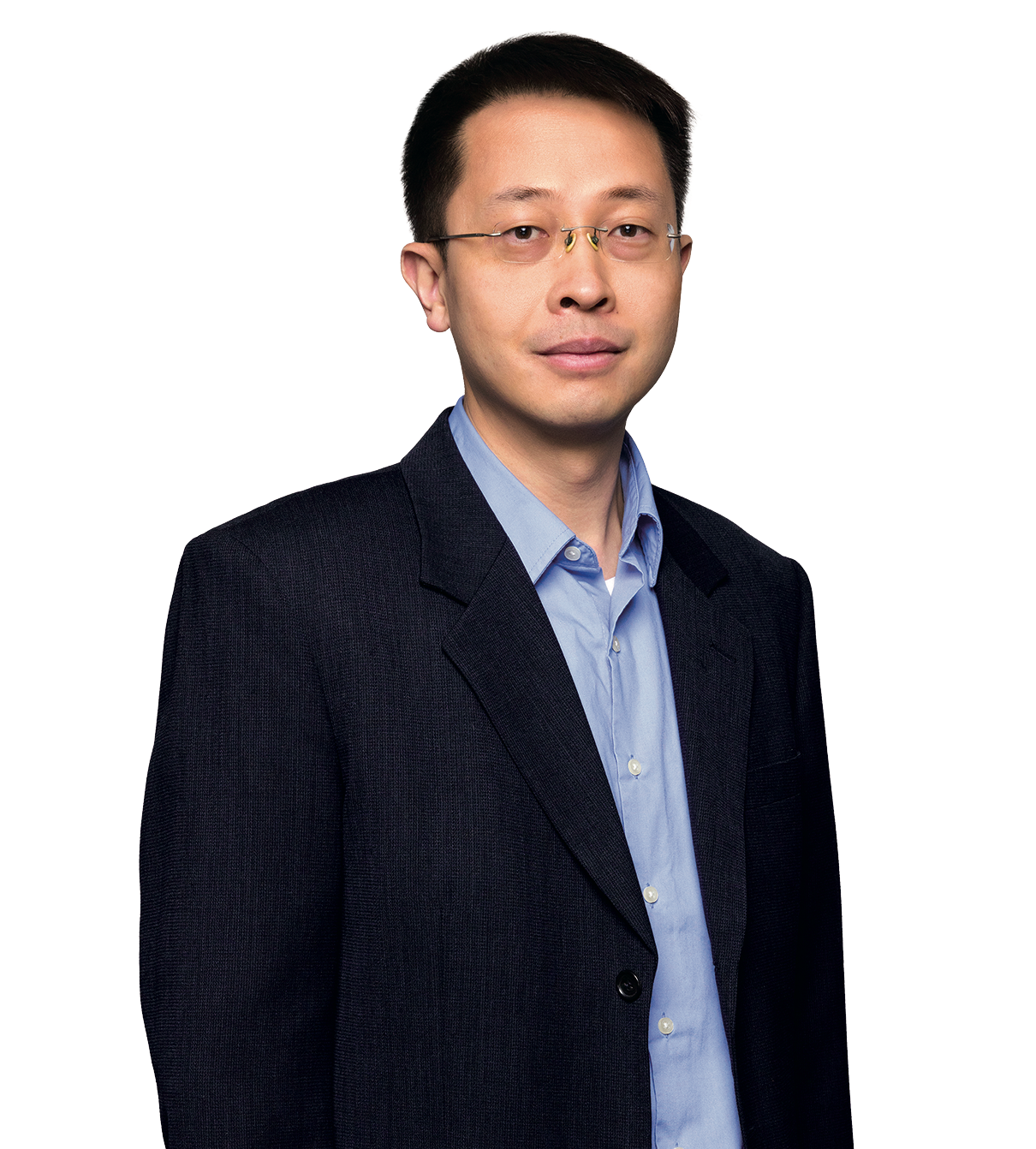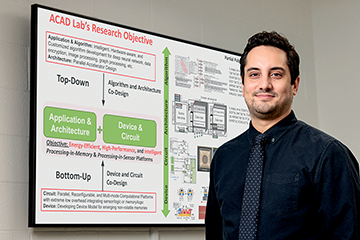From the Interim Provost
Atam P. Dhawan
Interim Provost and Senior Executive Vice President
Senior Vice Provost for Research
Distinguished Professor of Electrical and Computer Engineering
Building Resilience
Scientific Innovation for a Sustainable, Equitable Future
Learn MoreConstruction Engineering
Lab-Simulated Earthquakes - Test the Mettle of ‘High-Performance’ Building Materials
Learn MoreSustainable Design
Mapping an Ancient Solution to a Modern Crisis
Learn MoreEnvironmental Chemistry
The Rise of a Climate-Triggered Neurotoxin in the Arctic Tundra
Learn MoreNJIT in the World
Alumni Q&A
Learn MoreWater Remediation
Harvesting the Toxic Blooms of Summer
Learn MoreDiversity in Science
Shark Science
Learn MoreUndergraduate Research
From City Streets to Waterways, Undergraduates Use Data for Change
Learn MoreDefusing Disaster
Defusing Disaster
Learn MoreESSAY - Novel Building Materials
Converting Yesterday’s Rubble into Tomorrow’s Cities
Learn MorePower Electronics
Working the Wind
Learn MoreLanguage Development
Singing Lessons
Learn MoreApplied Optics
Tracking a Deadly Rise, Historic Fall of Insect Populations
Learn MoreEconomics of Recycling
New Futures for Old Plastics
Learn MoreCommunity-Engaged Architecture
Tiny Home Designs Offer Big Community
Learn MoreNew Faculty
New Faculty
Learn MoreFaculty Accomplishments
Faculty Accomplishments
Learn MoreResearch at NJIT: By the Numbers
Research at NJIT: By the Numbers
Learn MoreView and Download PDF
View or download the complete PDF.
New Jersey has only six wind turbines, but that will soon change. Within two years, some 500,000 homes will be powered by a new wind farm located off the state’s southern coast. Before a single turbine in this multi-phase project can begin generating renewable energy, however, NJIT is tackling a secondary problem in the clean energy space — the need to nurture a new generation of engineers and managers who can operate and maintain these facilities.
The Ocean Wind farm, a project of Ørsted North America, will be the first offshore wind farm in the Garden State. Philip Pong, an associate professor of electrical and computer engineering, is developing new ways to efficiently maintain turbines and train the staff needed to service them.
“The offshore wind industry is a new thing to the United States. Europe has been doing this for 20 to 30 years, and we have just started,” explains Pong, who operates the Sensor Research Laboratory alongside the Green Technology Research and Training Laboratory.
“The power engineers that we train right now are still based on the power system that we developed 100 years ago — Edison, Westinghouse — so our textbooks are still talking about those transformer-based power systems. But now with renewable energy, it’s turning into power-electronics-based systems. It’s a totally new technology concept, but our education is not catching up with that yet.”
Pong and his research team are working on several fronts to update the power industry and its workers.
In the sensor laboratory, he’s working with students to develop monitoring systems in which turbine operating data is acquired by contactless transmission through sensors and evaluated with machine-learning software. The lack of physical contact between sensors and the turbines means easier installation and lower costs, not to mention a reduced chance that staff will have to travel 15 miles offshore and climb up the imposing structures to fix broken sensors.
The vibrations induced by mechanical faults in the gearbox, bearings and other components in the turbine’s drivetrain will alter the behavior of the wind turbine generator. Electrical faults in the system will also change the performance of the wind turbines; those faults and anomalies will be detected through remote monitoring of sensors in the generator, explains Akhyurna Swain, a Ph.D. student.
Working with Pong, Sindhu Sai Sree Parimi, a graduate student, and senior Salma Alami Yadri will make use of sensor data and machine learning to model and predict the performance of the wind turbines. This can help determine what parts might break and where in the system.
Pong is building a scaled-down turbine learning facility so that tomorrow’s wind engineers can gain hands-on experience. The turbine will be approximately two meters tall and move air at 33 miles per hour, which isn’t that speedy outdoors, but is substantial in an enclosed space. Server racks will emulate a power grid so that students can study how the grid reacts to a gamut of conditions, such as energy spikes. They can adjust the grid’s current, voltage and power flow to carry out numerous experiments. New research projects and courses will be developed around this facility. “I think students will be excited to see that,” Pong notes.
Finally, NJIT will re-train existing energy workers on the technical aspects of offshore wind technology. “For that, we are working closely with the New Jersey Economic Development Authority (NJEDA) and with stakeholders in offshore wind energy, such as New Jersey energy company PSEG and Ørsted, to make sure we produce the right type of talent they need to work in the industry,” Pong says, noting that NJEDA sponsors Swain’s research. “In the near future, over one-third of the electricity in New Jersey will be generated by offshore wind power. It is imperative to start training that new talent now.”
He is developing bootcamp training, to begin this summer, for workers in the power industry, as well as people with a background in the physical sciences who are interested in offshore wind technology. He’s also putting together an offshore wind power technology conference that NJIT will host to apprise potential jobseekers and other stakeholders about the latest offshore wind power technology and employment opportunities in the state.
“Inadequate preparations for an unexpected extreme event are what caused blackouts in Texas in 2021, when more than 4.5 million homes and businesses lost power,” Pong says, adding that through research, simulation and training right now, “New Jersey can ensure its infrastructure is ready for new challenges.”

Philip Pong is building a scaled-down turbine learning facility so tomorrow’s wind engineers can get hands-on experience.

Boosting Computer Power Chip by Chip
The energy usage of 75 billion internet-connected devices could be reduced 1,000-fold if they could do more thinking for themselves, rather than continuously calling on cloud servers for help. The incorporation of artificial intelligence into complex applications such as distributed sensors, medical imaging and customer research, as well as in everyday devices at home and work, will ratchet up computing demand substantially.
”The greatest challenges in the semiconductor industry right now are the power wall and the memory wall. We’ve put so many transistors on chips to add functionality that our power budget is reaching capacity,” says Shaahin Angizi, an assistant professor of computer engineering. “The problem that needs more investigation is how we can resolve this at
the architecture level.“
Angizi believes the answer is to make new kinds of computer chips that restructure the traditional CPU layout, which has separate areas for processing and memory. He is funded by two National Science Foundation grants to study in-memory computing and in-sensor computing, respectively.
Rather than performing computation inside the main CPU, he says, they would instead do the Boolean logic, for example, inside cache memory, or even directly inside physical sensors with carefully placed transistors. This would be faster and more energy-efficient than waiting for a device-to-cloud-to-server connection, and back again.
Angizi and his collaborators at Arizona State University presented their ultra-fast, in-memory computing prototype last year at the IEEE 52nd European Solid-State Device Research Conference in Milan, Italy. It was 1,000 times faster than the average personal computer and 200 times more power-efficient.
“Now we are targeting applications in different domains,” he says, including encryption systems and the deep neural networks used in medical and environmental sensing devices.
An emergency room worker, he notes, could potentially scan a patient’s wound with a handheld device that would use in-sensor computing to evaluate the image and in-memory computing to perform artificial intelligence on possible actions to take.
